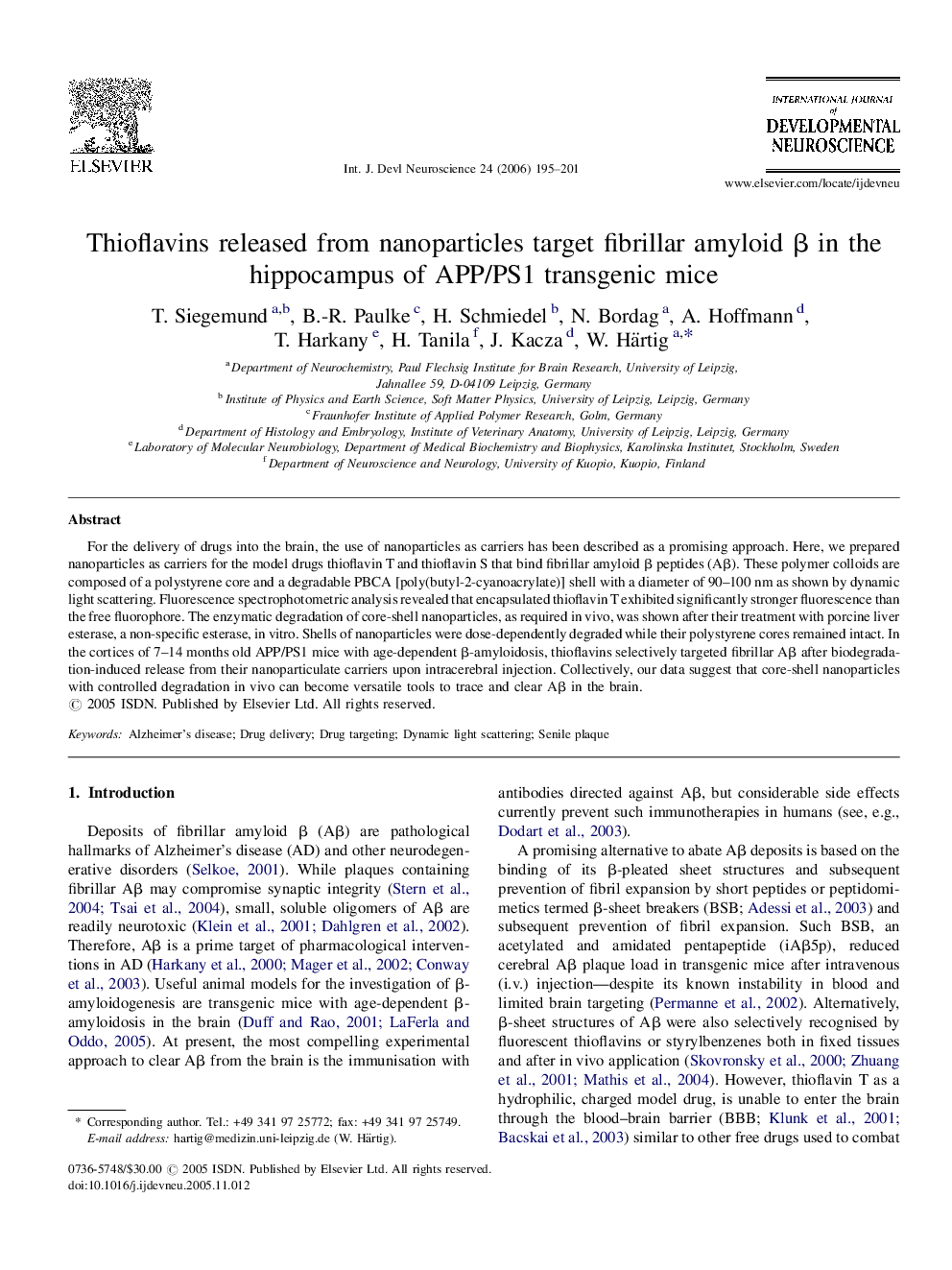| Article ID | Journal | Published Year | Pages | File Type |
|---|---|---|---|---|
| 2787176 | International Journal of Developmental Neuroscience | 2006 | 7 Pages |
For the delivery of drugs into the brain, the use of nanoparticles as carriers has been described as a promising approach. Here, we prepared nanoparticles as carriers for the model drugs thioflavin T and thioflavin S that bind fibrillar amyloid β peptides (Aβ). These polymer colloids are composed of a polystyrene core and a degradable PBCA [poly(butyl-2-cyanoacrylate)] shell with a diameter of 90–100 nm as shown by dynamic light scattering. Fluorescence spectrophotometric analysis revealed that encapsulated thioflavin T exhibited significantly stronger fluorescence than the free fluorophore. The enzymatic degradation of core-shell nanoparticles, as required in vivo, was shown after their treatment with porcine liver esterase, a non-specific esterase, in vitro. Shells of nanoparticles were dose-dependently degraded while their polystyrene cores remained intact. In the cortices of 7–14 months old APP/PS1 mice with age-dependent β-amyloidosis, thioflavins selectively targeted fibrillar Aβ after biodegradation-induced release from their nanoparticulate carriers upon intracerebral injection. Collectively, our data suggest that core-shell nanoparticles with controlled degradation in vivo can become versatile tools to trace and clear Aβ in the brain.
